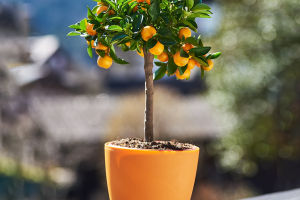Cerastium furcatum is a mat-forming, hardy perennial known for its small, starry white flowers and soft, gray downy leaves.
It typically blooms in early spring or summer, adding a touch of charm to gardens, particularly in its Chickweed or Snow-in-summer varieties. These plants are low-growing and spread rapidly, creating a delightful ground cover.
Ideal Growing Conditions
Dear Lykkers! This plant thrives in full sunlight or light shade, with a soil pH ranging from 6.0 to 7.0. It adapts to most soil types but does best in moist, well-drained soils. For optimal results, it is best to plant Cerastium furcatum in early spring or towards the end of autumn.
Cerastium Furcatum Growing and Care Guide
Common Names
Chickweed
Snow-in-Summer
Mouse-eared Chickweed
Alpine Chickweed
Common Mouse Ear
Life Cycle
Hardy perennial
Winter annual
Height
2 to 18 inches (5 to 45 cm), mat-forming, with tufts.
Native
Temperate regions.
Family
Caryophyllaceae.
Growing Region
Zones 3 to 9.
Flowers
Species dependent, blooming in early spring or summer.
Herbaceous, white, and small star-shaped flowers.
Foliage
Grey, silver, or green.
Downy and elliptical in shape.
Sowing Cerastium Furcatum Seeds
Sowing Outside
To grow Cerastium, plant seeds outdoors in early spring before the last frost. The seeds should be covered lightly with topsoil. Space the seeds about 4 to 18 inches (10 to 45 cm) apart.
Sowing Inside
For indoor sowing, start the seeds about 7-8 weeks before transplanting them outdoors. Germination typically occurs in one to two weeks at a temperature of 65 to 75°F (18 to 24°C). Once the seedlings are ready, transplant them outdoors following the last frost, or in autumn. Space them accordingly, from 15 cm (6 inches) for smaller species to 40 cm (16 inches) for larger varieties.
Requirements and Care for Cerastium Furcatum
Growing Conditions
Cerastium thrives in full sun or light shade and requires soil with a pH of 6.0 to 7.0. While the plant can grow in most soil types, it performs best in moist, well-draining soils.
Pruning and Dividing
Prune the plants after flowering to maintain their appealing appearance. Every 2 to 3 years, divide the plants to maintain their vigor and encourage healthy growth. In cooler regions, divide in the spring, while in warmer climates, it is best to divide in autumn. You can also propagate Cerastium through cuttings, which are best taken in the early summer months.
How to Grow Cerastium Furcatum
Cerastium is best grown outdoors in early spring, before the last frost. Ensure that the planting area has well-drained soil with a pH of 6 to 7. Choose a spot in the garden that receives either partial shade or full sun. If starting indoors, begin about seven weeks before they are due to be transplanted outdoors, either in the autumn or after the last frost in spring.
Looking After Cerastium Furcatum in the Garden
Cerastium plants, including Snow-in-Summer varieties, are easy to care for. After they flower, simply cut them back. For additional plants, take cuttings during the summer months. Dividing the plant every three years helps maintain its vitality.
Common Questions about Cerastium Furcatum
How many species are in the Cerastium genus?
The Cerastium genus contains around 100 species.
Are Cerastium plants good for gardens or landscaping?
Yes, Cerastium species, such as Cerastium tomentosum (Snow-in-Summer), make excellent ground cover with their silvery foliage and white flowers, ideal for gardens and landscaping.
Which Cerastium species are most frequently grown by gardeners?
Cerastium tomentosum, commonly known as Snow-in-Summer, is a popular choice due to its carpet of white blooms in late spring and early summer.


